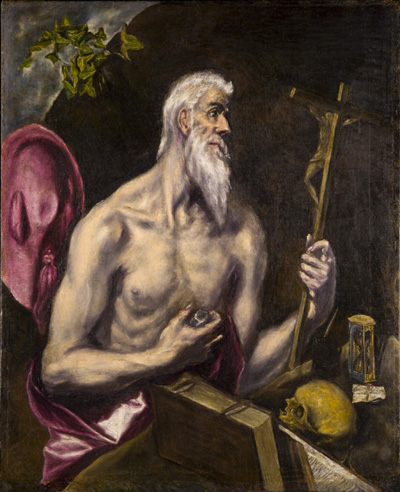Saint Jerome
ca. 1600
Domenikos Theotokopoulos, called El Greco (1541-1614)
Oil on canvas
80 x 65 cm
As a Doctor of the Church and translator of the Vulgate, the Latin version of the Bible, St. Jerome has always enjoyed a prestige in the Catholic Church. When the Council of Trent declared the Vulgate the official translation, St. Jerome became an even more significant figure in Catholic Reformation propaganda as the Church resisted the Protestants' program to translate the Bible into the vernacular. Nowhere was he more revered than in Spain, where he served as an exemplar of ascetic piety and learning, and a monastic order dedicated to St. Jerome, the Hieronymites, flourished.
When El Greco came to paint this canvas, he had already depicted the subject many times, yet he offers a vivid summation of the features that made the saint such an appealing figure. El Greco shows St. Jerome as an old man living the austere life of a hermit, far from the world, with an hourglass and skull at hand to remind him of his mortality. His rapt contemplation of the crucifix evokes his intense piety; the books and penholder establish his role as a scholar; and the cardinal's hat hanging behind him indicates his dignity as a Doctor of the Church. Although El Greco paints these features with an impressive control, it is his masterful rendering of the figure's pose and expression that most effectively captures the ascetic zeal which reformers prized in St. Jerome.
Text and images © Hispanic Society of America.
